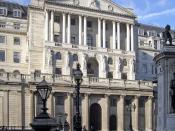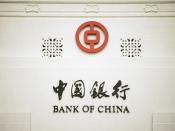Contents
INTRODUCTION
The principal types of banking in the modern world are commercial banking and central banking. A commercial banker is a dealer in money and in substitutes for money such as checks or bills of exchange. The banker also provides a variety of financial services. The basis of the banking business is borrowing from individuals, firms, and occasionally governments. With these resources and also with the bank own capital, the banker makes loans or extends credit and also invests in securities. The banker makes profit by borrowing at one rate of interest and lending at a higher rate and by charging commissions for services rendered. A bank must always have cash on hand in order to pay its depositors upon demand or when the amounts credited to them become due. It must also keep a proportion of its assets in forms that can readily be converted into cash. Only in this way can confidence the banking system be maintained.
Provided it honours its promises, a bank can create credit for use by its customers by issuing additional notes or making new loans, which in their turn become new deposits. The amount of credit it extends may considerably exceed the sums available to it in cash. But a bank is able to do this only as long as the public believes the bank can and will honour its obligations, which are accepted at face value and circulate as money. So long as they remain outstanding, those promises or obligations constitute claims against that bank and can be transferred by means of checks or other negotiable instruments from one party to another. These are the essential of deposit banking as practiced throughout the world today with the partial exception of socialist type institution.
Another type of banking is carried on by...



Outstanding effort
Certainly the longest submission I've come across...
But, what differentiates the two sources you use: www.bankofengland.com and www.bankofengland.co.uk?
0 out of 3 people found this comment useful.